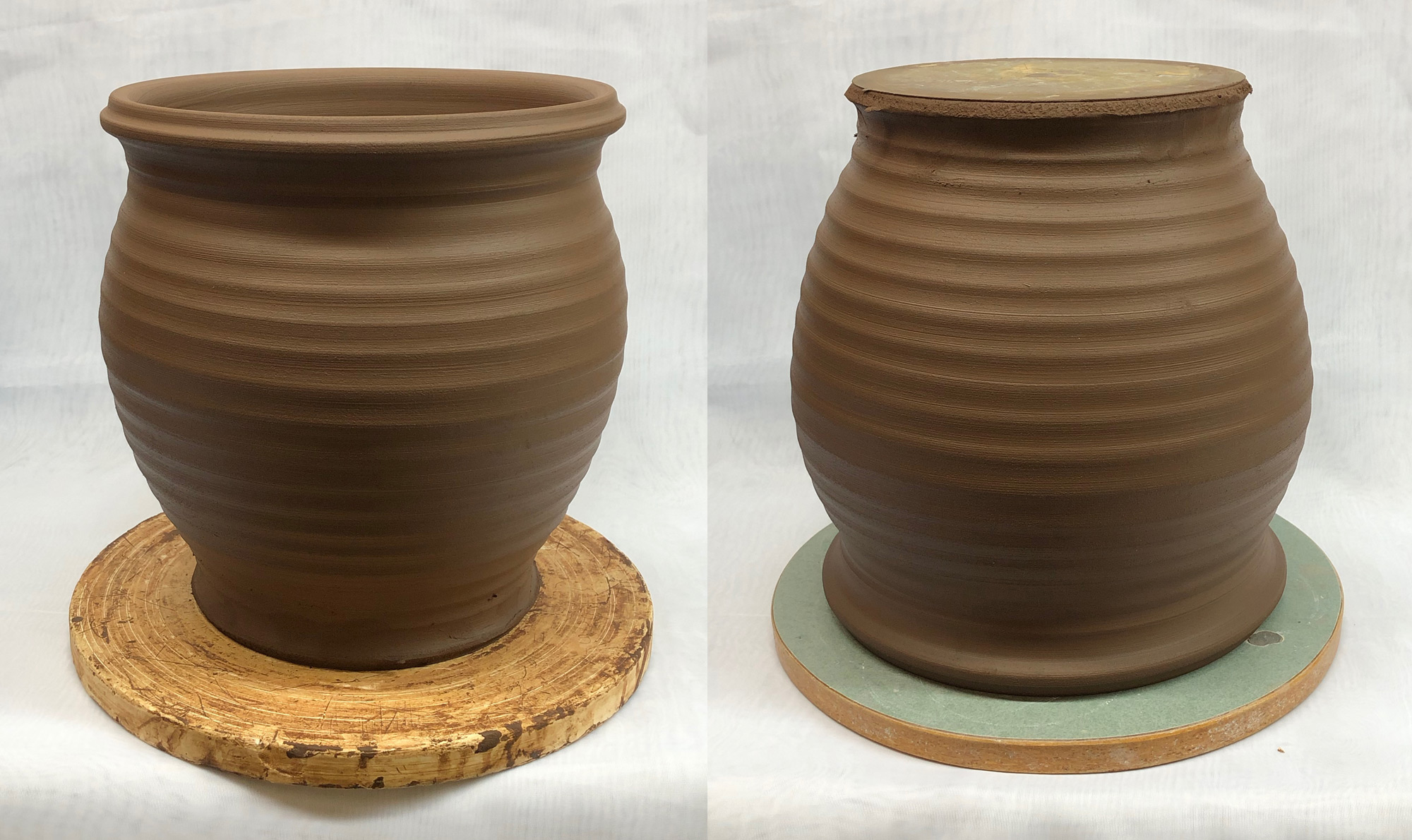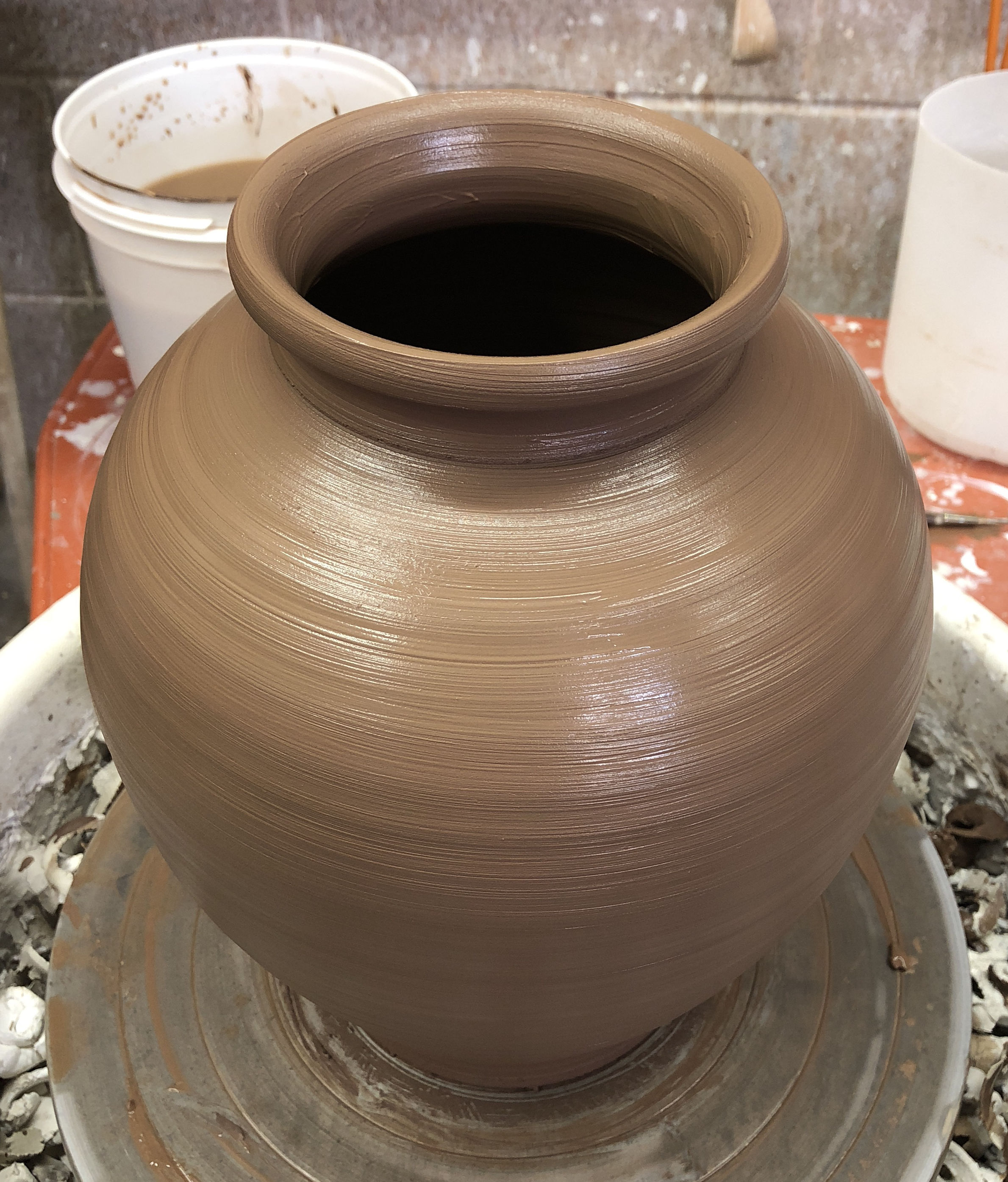| Monthly Tech-Tip | No tracking! No ads! | |
Throwing
Throwing is a forming process in ceramics, it has been synonymous with pottery for millenniums. It is magic to watch and looks easy, but it is not. A lot of determination is needed to learn this skill and it is one that is never mastered completely, improvement never stops for those who seek it. Each potter has his own style, there is no "right way". Each type of object has its own throwing challenges, the most dedicated throwers will make thousands of just one type of piece to perfect it.
Plastic clay is said to "throw well". Throwing is actually one of the best tests of plasticity (since there is no reliable instrument that can measure this property). Simply taking two pieces of clay of the same weight and throwing the largest thinnest vessel possible of each compares their plasticities.
Traditional potters like this in Japan or Korea used (and use) non-plastic clays, aging them to at least optimize it as much as possible. It can appear that they throw impossibly large thin-walled pieces out of very soft clay, but the laws of physics apply to them like anyone else, pieces are thicker walled than they appear. But they do teach us much account listening to the clay and working patiently and methodically.
Modern pottery clays and porcelains, especially in the west, incorporate ball clays and bentonite to have as much plasticity as needed, this makes them very easy to throw even by beginners. Most people these days learn on Youtube, thousands of videos are likely available. If you are just starting it can be helpful to follow some simple guidelines:
-Don't use the clay too soft
-Don't hurry, movements to center, lift and shape should be slow and deliberate
-Don't release pressure quickly, let go slowly
-Squeezing the clay wall does not lift it, one of your hands or fingers has to get under the clay to lift it
-Your hands should be touching each other whenever possible to be more steady
-Grogged clay increases friction between the clay and your fingers, avoid it (if pieces are dried evenly no cracks will happen)
-Keep the inside and outside angle between base and wall as square as possible so that all lifts have a good start
-Learn the right speed
-Learn to use the right mix of slip and water to lubricate well at all times
-When centering the clay, push away and pull toward yourself (rather than press laterally from each side)
-Minimize the area of contact between your hands and the clay when centering (by cupping them), this increases the pressure and moves the clay better
-Avoid to many fancy tools at the start, but make sure you have a good sponge and rubber rib
-Be prepared to lose lots of pieces, just start with another piece of clay when you run into trouble.
Related Information
Throwing a pot on a potters wheel

This picture has its own page with more detail, click here to see it.
Throwing a Polar Ice mug on the potter's wheel
Polar Ice is plastic enough to be able to throw mugs having walls as little as 3mm thick (bottom-to-top). It is very sticky if too soft so I stiffen it on a plaster table before throwing it. The video is speeded up in the middle section.
Birds-eye-view throwing a terra cotta mug
The video is speeded up in the middle portion. I am wearing camera glasses so please forgive the jerkiness and off centre of the video. This type of clay body is normally very plastic, better throwers must consciously be careful not to make walls too thin.
Why throw on a plaster bat when making larger pieces?

This picture has its own page with more detail, click here to see it.
To achieve more even drying. As soon as was practical after throwing (a few hours), I covered the piece with a cloth and then put a garbage bag over it. While that put the upper section a little ahead of the base in drying, over night the base caught up (the plaster sucks the water out of it, even the walls of the piece stiffen). In the morning I remove the plastic and within an hour or two it is ready to lift off the bat and turn over, shortly after that I can trim it. I secure each plaster bat to the wheel-head using a "Batmate", that works extremely well. To stick the clay to the plaster well I apply a thin layer of slip, round off the piece of clay and firmly slam it down onto the plaster (if it is not rounded it will not stick as well or may break the bat). This is quick and effective to achieve the even drying needed to avoid a drying crack. This method is especially important for large plates and bowls, which often suffer s-cracks.
Why do some clays split like this on throwing or forming?

This picture has its own page with more detail, click here to see it.
An example of splitting, where a thrown clay develops a split minutes after throwing. This often happens at stretch-points with sandy or groggy clay bodies or those that have a wide range of particle sizes (e.g. native clays not ground to 200 mesh). The larger particles create networks into which water can penetrate and begin and propagate a split. It is thus wise not to leave water or high-water-content slip on any surfaces experiencing tensile stress during forming.
Tobla Howell throwing Plainsman raku clay.

This picture has its own page with more detail, click here to see it.
Links
| Glossary |
Slip Casting
A method of forming ceramics. A deflocculated (low water content) slurry is poured into absorbent plaster molds. As it sits in the mold, usually 10+ minutes, a layer builds against the mold walls. When thick enough the mold is drained. |
| Glossary |
Casting-Jiggering
A process in ceramic production where items are slip-cast first and then finished using a jigger wheel. |
| Glossary |
Jiggering
Jiggering is a process of forming pottery that employs a spinning plaster mold and a tapered template to press soft clay or porcelain against it. |
| Glossary |
Hot Pressing
|
| Glossary |
Dust Pressing
Many ceramic products, especially tile, are formed by pressing high-moisture or binder-containing dust or pelletized dust into steel molds at high pressures. |
| By Tony Hansen Follow me on        |  |
Got a Question?
Buy me a coffee and we can talk

https://digitalfire.com, All Rights Reserved
Privacy Policy

